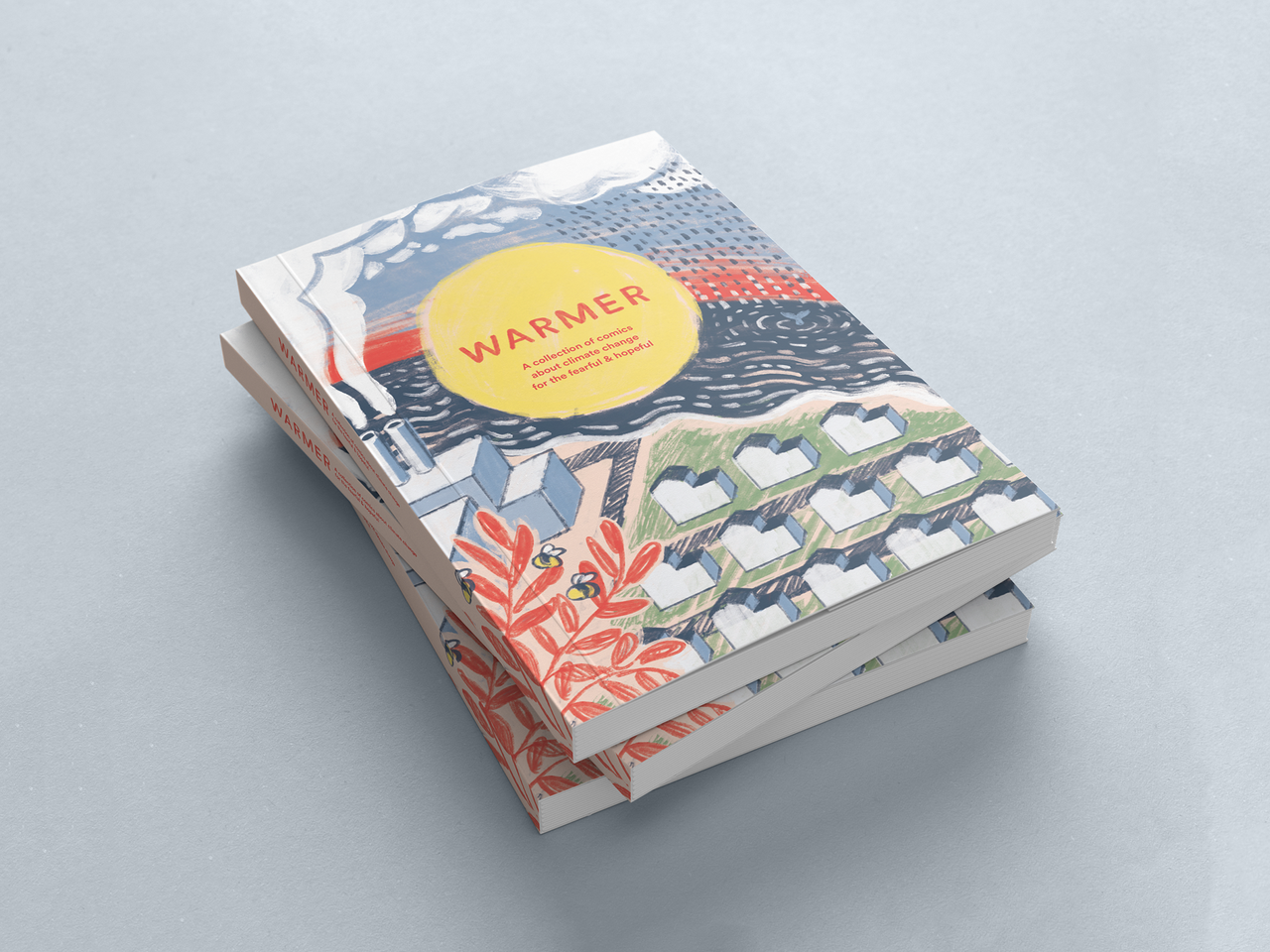In the past decade or so, a subgenre of dystopian fiction has emerged to confront our changing planet: climate fiction, or “cli-fi.” In stories like Jeff VanderMeer’s “Southern Reach” trilogy, or Kim Stanley Robinson’s New York 2140 and Claire Vaye Watkins’ Gold Fame Citrus, characters confront floods, droughts and other environmental catastrophes.
But, as a recent post on the Smithsonian blog points out, these stories are swiftly becoming not just future possibilities, but present realities.
In an interview with HuffPost, VanderMeer noted that, “the solutions a fiction writer can provide, the speculation, is perhaps edging toward offensive in a policy context ― because we have scientists telling us what we need to do and they are the experts.”
A new cartoon anthology called Warmer ― which is currently seeking funding on Kickstarter ― addresses these issues and more. Co-edited by artists Madeleine Witt and Andrew White, the collection of works serves to provide support and hope to those who are mourning the damage done to the earth.
In an interview with HuffPost, White said, “As co-editors of Warmer, Madeleine and I wanted to make a book to offer comfort for those already fearful about climate change. So for the most part, Warmer doesn’t aim to convince anyone of anything. We imagined Warmer in part as a book that will function to encourage and support activists; to comfort those who, like ourselves, are wrestling with the grief of climate change.”
Below is a selection from five of the book’s contributors.
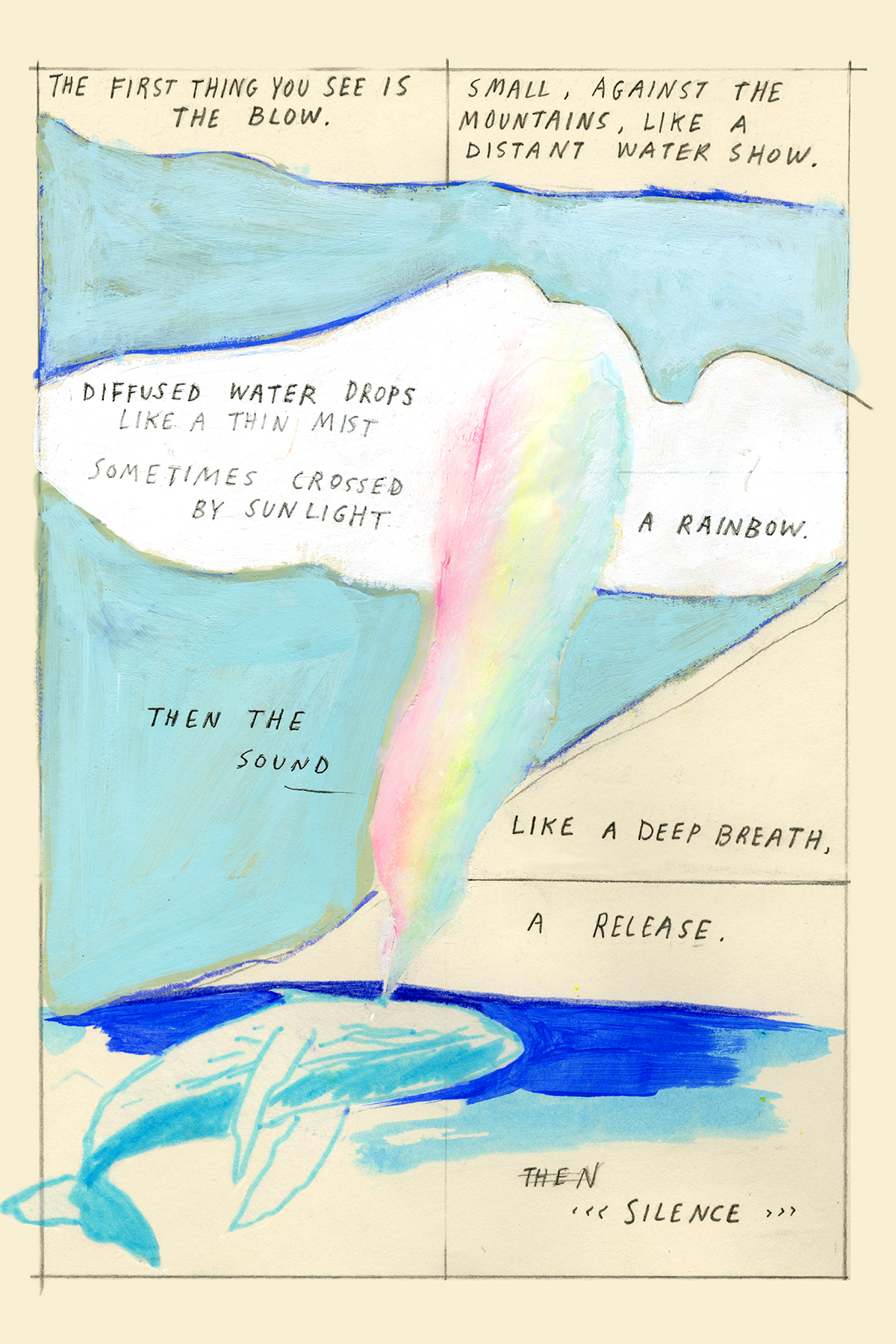
By Alyssa Berg
“This piece about humpback whale migration is the beginning of a collaborative project between me and my dear friend Catalina Jaramillo, a journalist who writes environmental/sustainability stories,” Berg said. “Through this collaboration I hope to express our shared love and respect for the ocean and its inhabitants.”

By Caitlin Skaalrud
“There’s beauty in just surviving despite everything, and real shame in so selfishly leaving all this to our children and grandchildren. And it won’t be far off in the distance — it’s already happening,” Skaalrud said. “I both feel helpless for my very young friends who will navigate climate change as it worsens, and still want to practically prepare them as much as I can. As I always say, ‘I can at least teach you to ride a horse, shoot a rifle, and start a fire.’”
She says that as an artist, she “can’t present a perfect argument or deeply considered treatise that would change anyone’s mind. I feel, if there’s anything I can do that will truly activate change, it’s touching people’s hearts.”
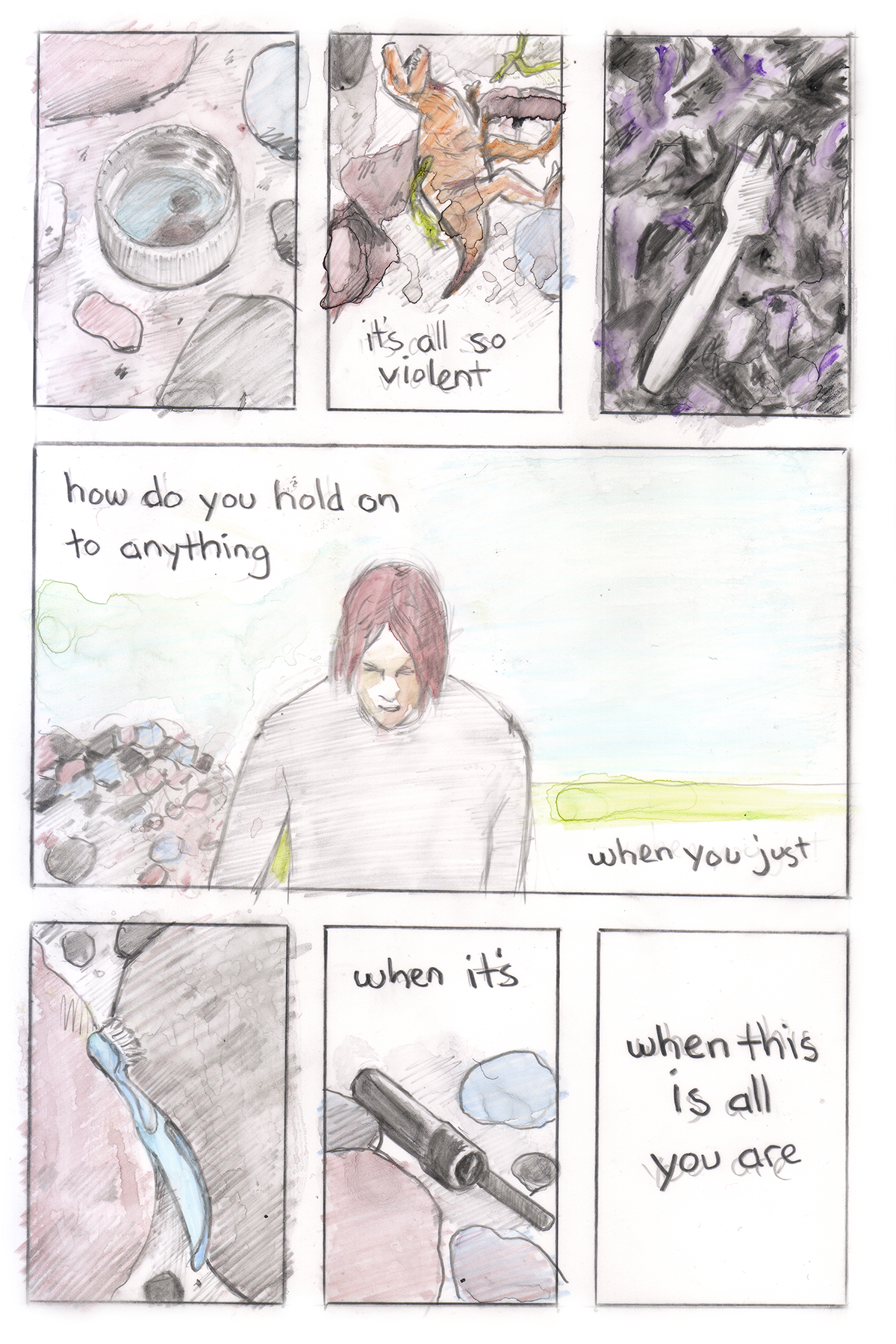
By Kimball Anderson
“Often in my work I engage with disability subjects, but when it comes to an issue as overwhelming as climate change, I think everyone of every ability is confronted with how limited they are,” Anderson said. “It’s always such a powerless feeling, such a moment of frustrated desire for control over your situation. We are ultimately still responsible for our part in this, even if we can barely do anything to fix it all. It’s a contradiction that can’t be resolved, a feeling of smallness in a moment where we need to be big.”
They continued, “Art has the power to expand our emotional understanding of the political, and this is an important form of activism. It’s a responsibility artists need to rise to.”
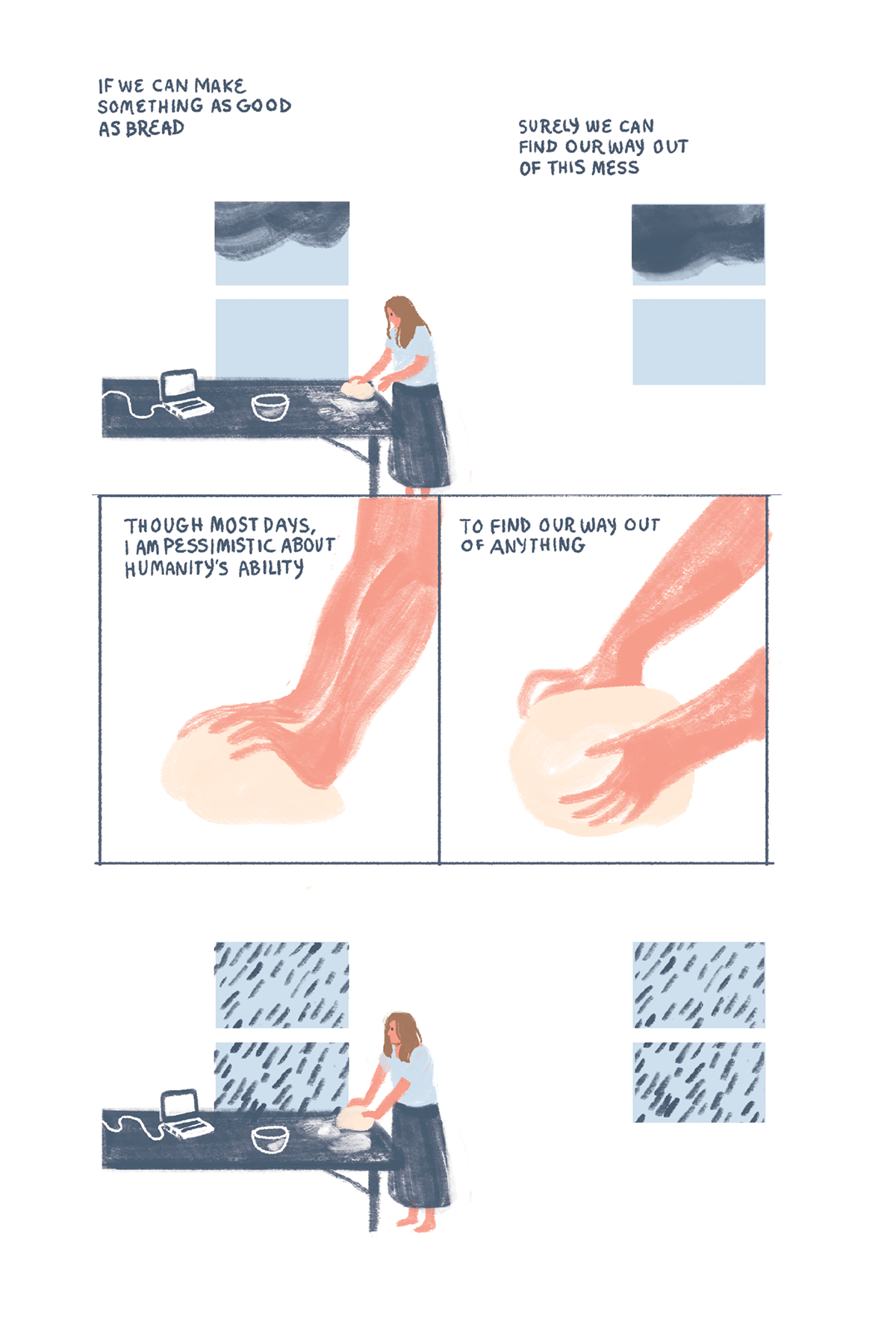
By Madeleine Witt
“For me, art and activism are two occasionally overlapping streams that come from the same source,” Witt said. “They both come out of a desire to see true things expressed, broken things healed, justice enacted. This comic, in particular, is a kind of meditative experience; the moment of quiet prayer before entering the battle, a necessary attempt to grasp the enormity of climate change and my own feeling about it. This comic is a piece of the reflection that necessarily precedes action.”
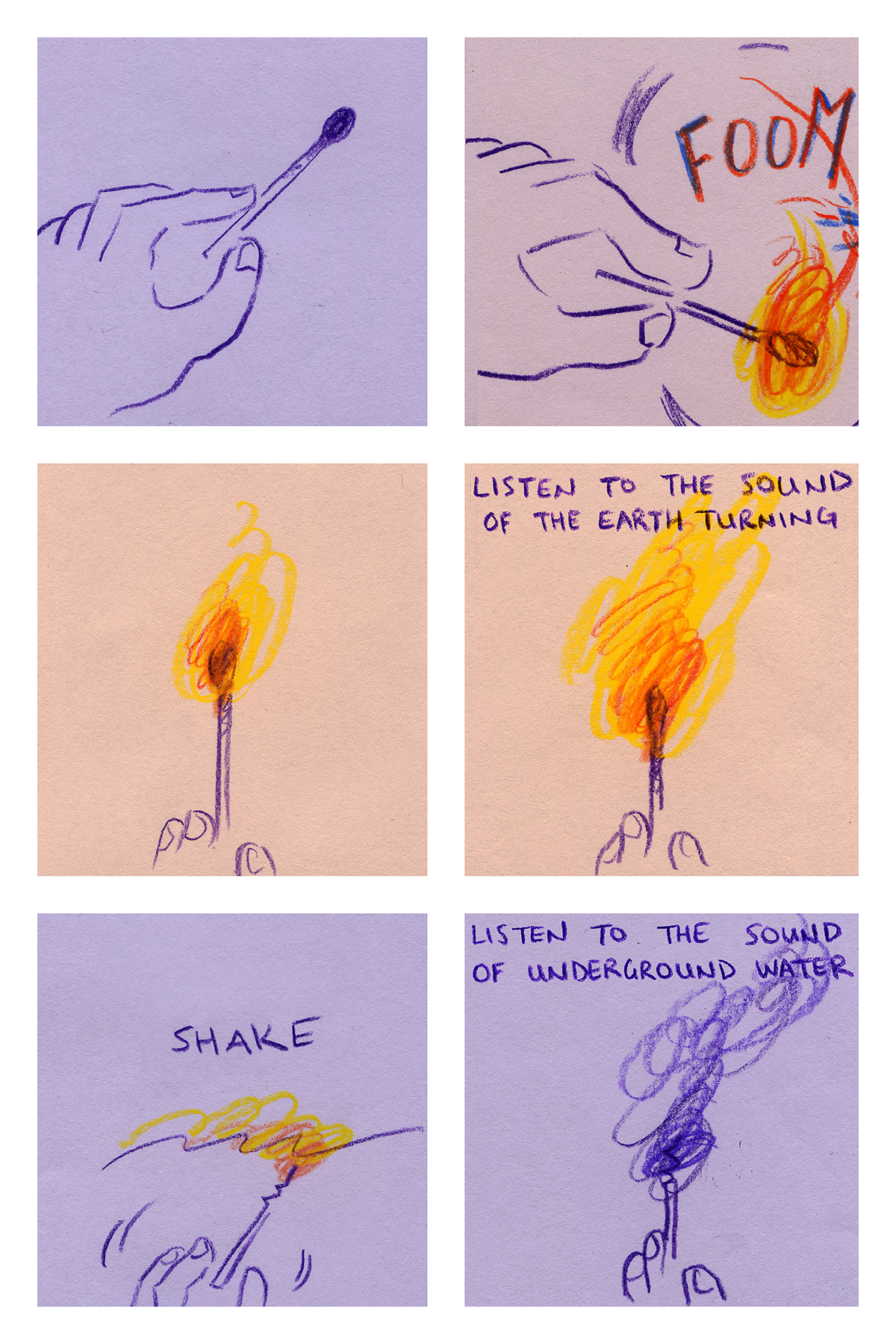
By Andrew White
“My piece for Warmer adapts several Yoko Ono instructions from her books Grapefruit and Acorn. For example, one piece that I adapted reads, ‘Walk in the footsteps of the person in front. 1. on ground 2. in mud 3. in snow 4. on ice 5. in water. Try not to make sounds,’” White said. “I found these pieces very moving. I couldn’t stop thinking about them. The instructions call upon the reader to go out into the world. Ono asks us to see the world as it is — to experience its beauty, its fragility, its splendor. So I aimed in my piece to both instill in readers that desire to reach out towards the world, and to communicate my own feelings about interacting with natural beauty when I fear that beauty might be fleeting.”
